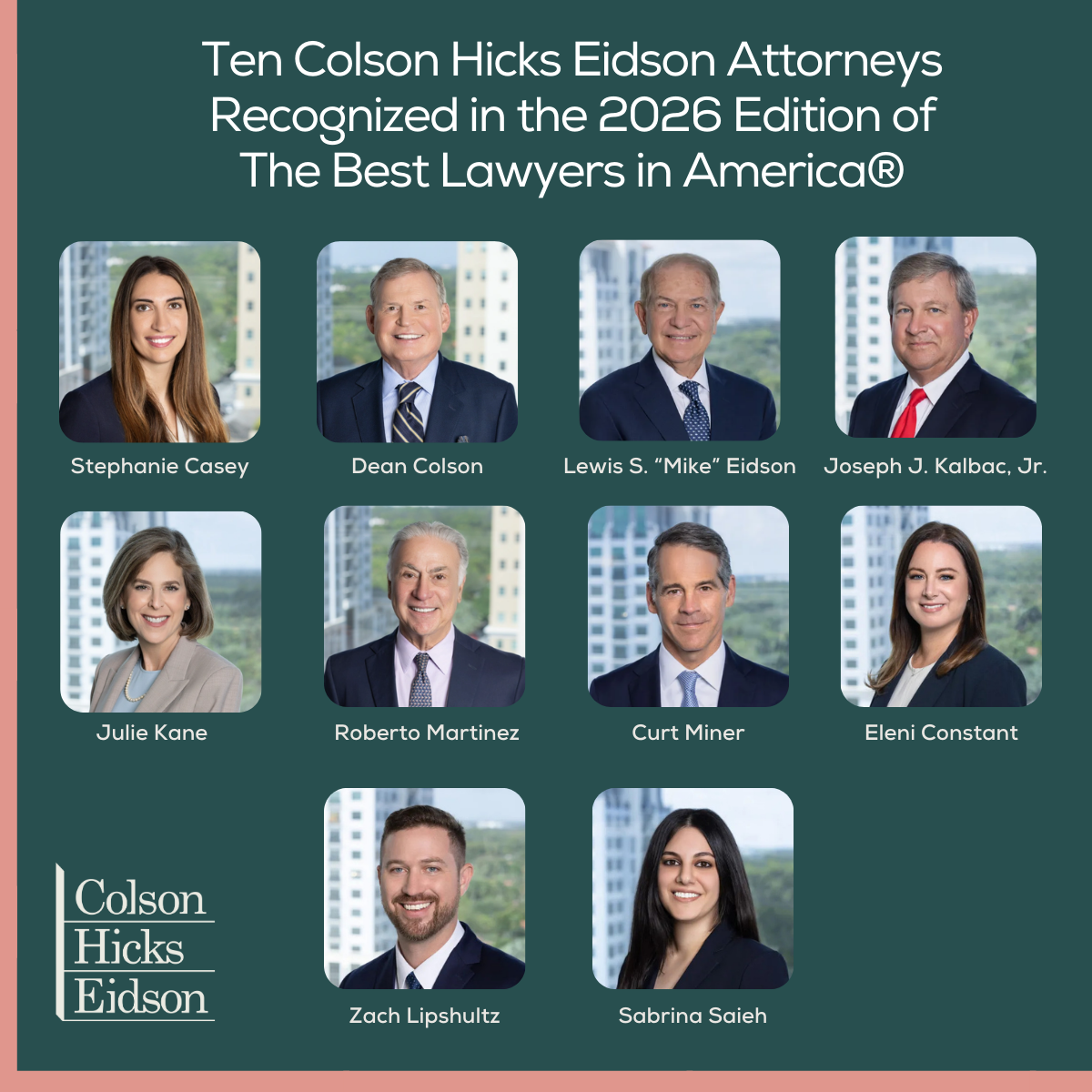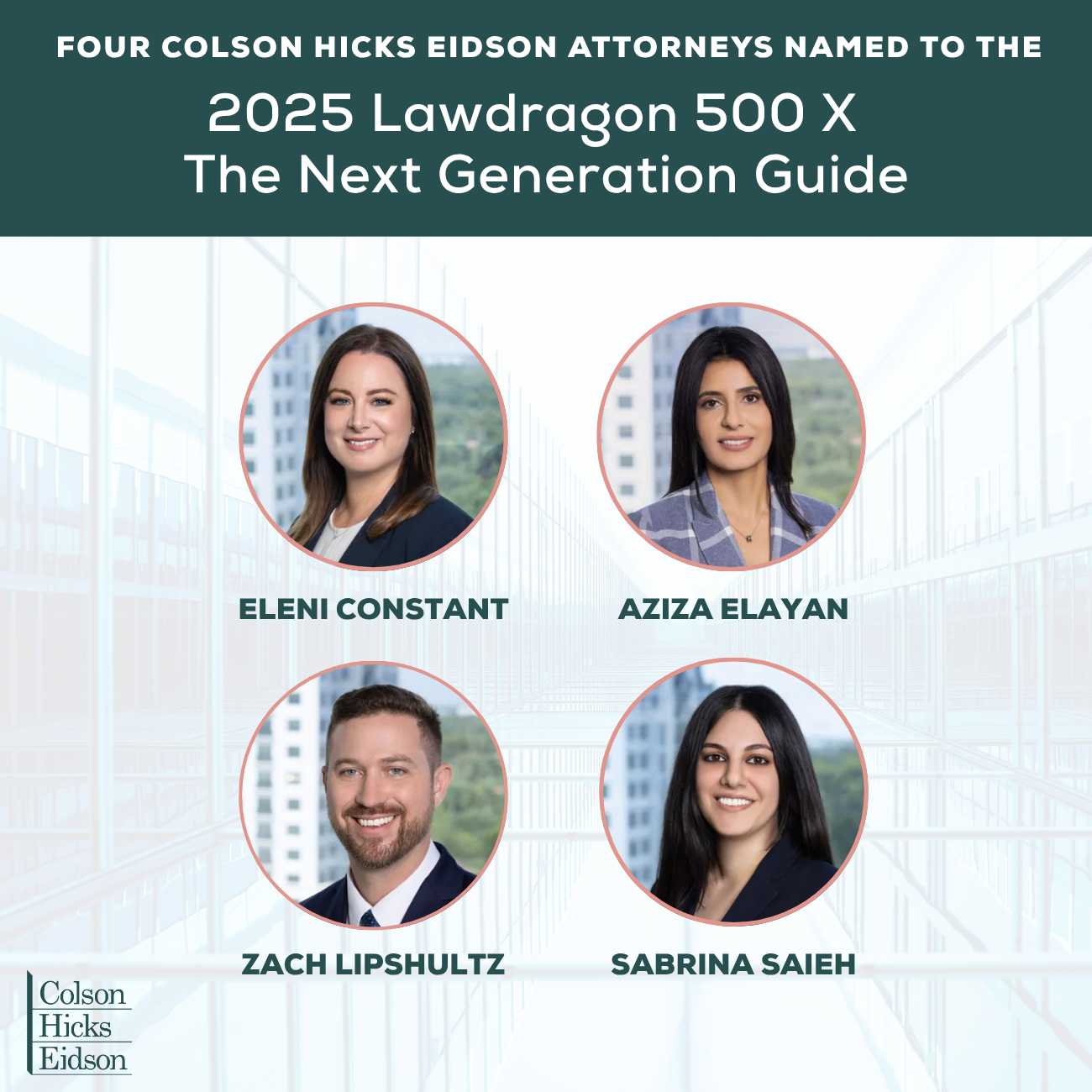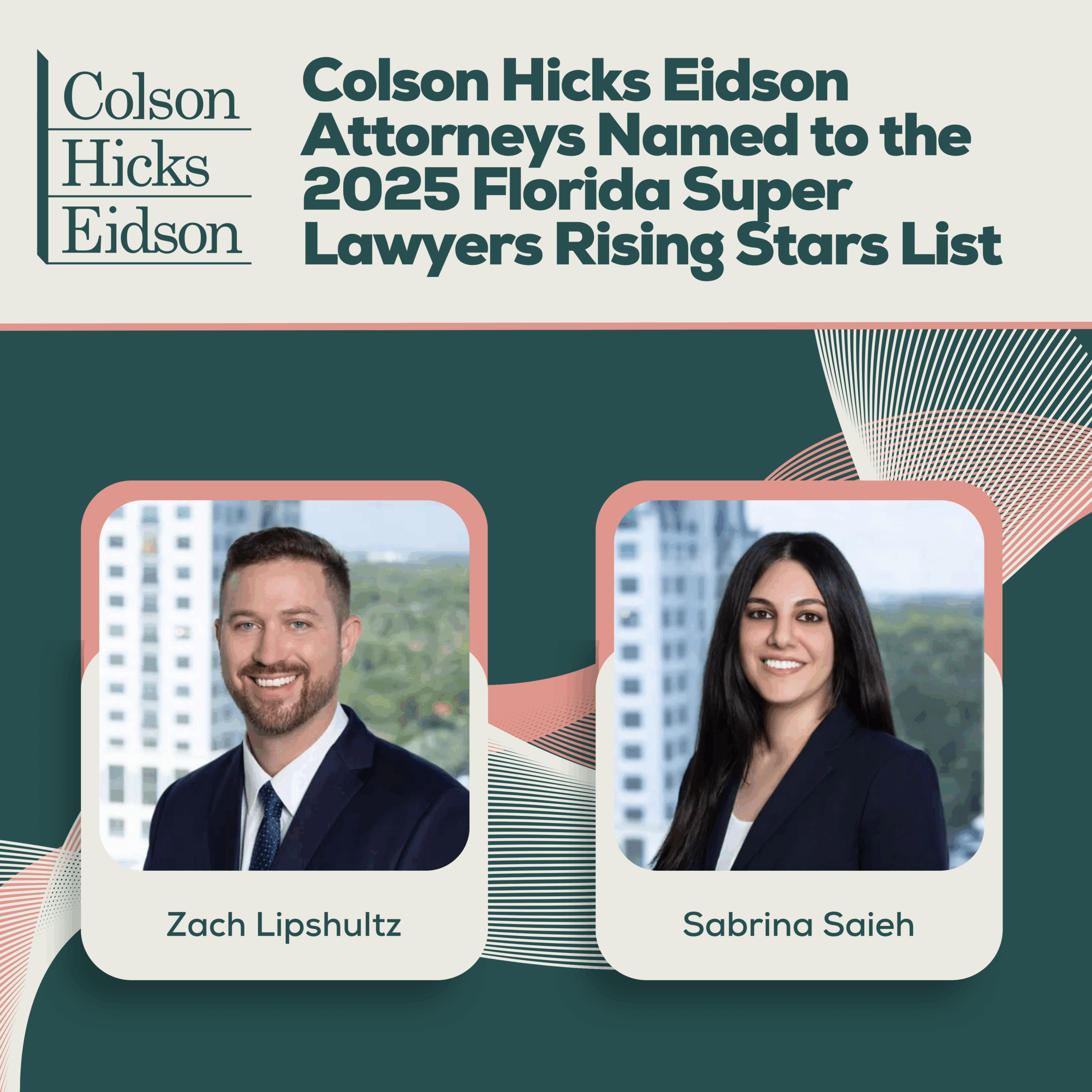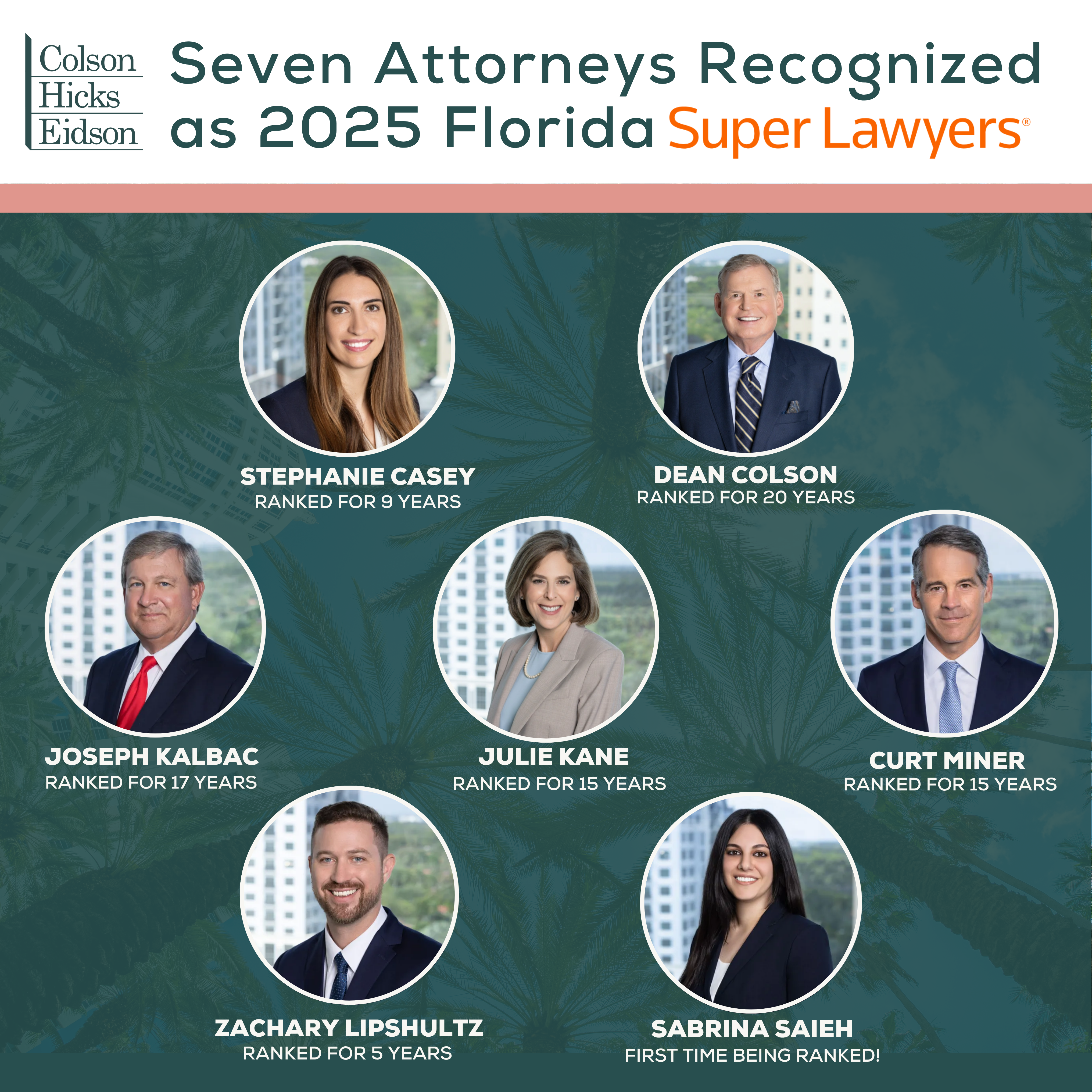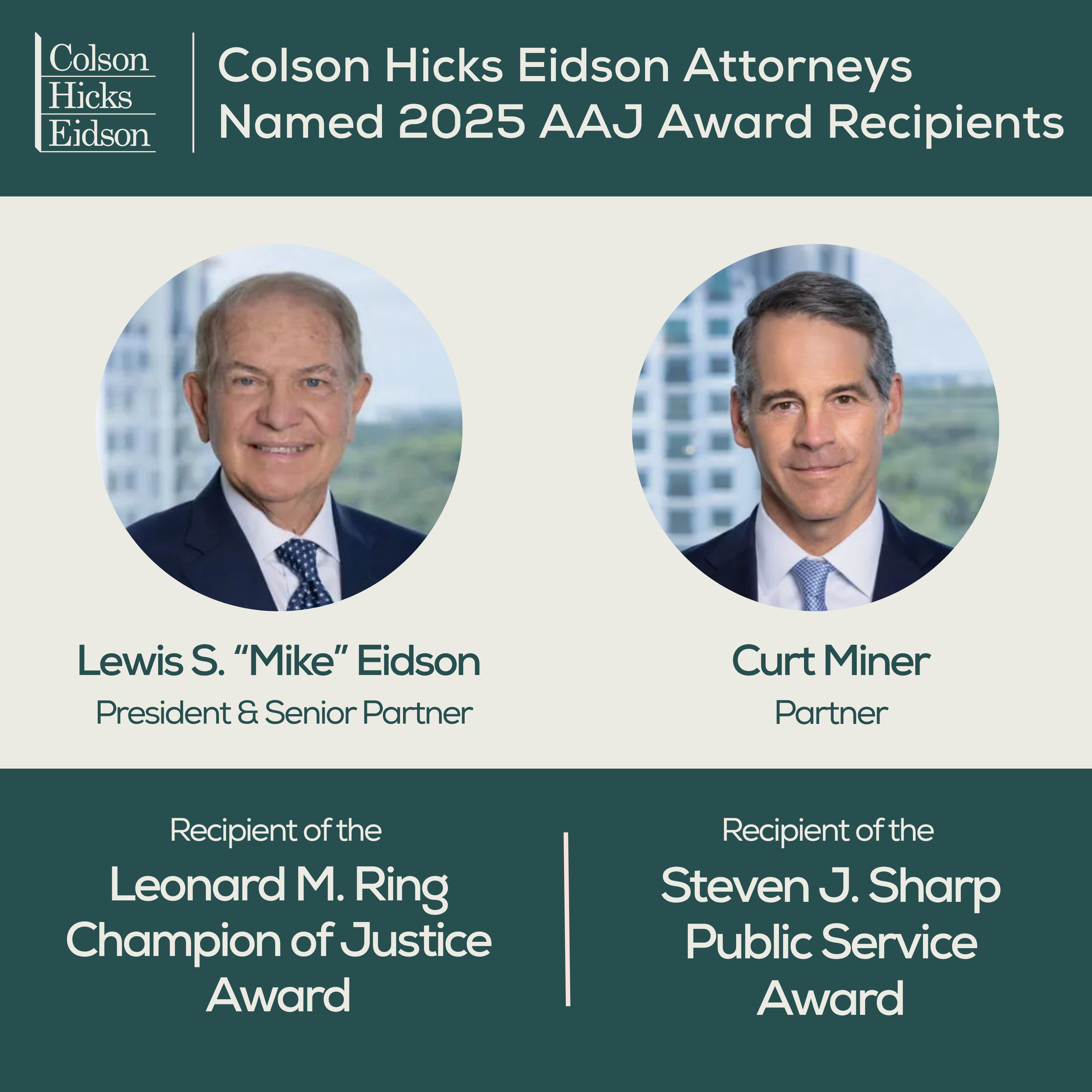Autonomous vehicles are quickly becoming a transportation reality as companies continue to refine the technology that allows motor vehicles to pilot themselves. Self-driving cars change the primary responsibility for the operation of the vehicle which, in turn, changes the potential liability for the damage and injuries that occur when cars get into accidents.
The operation of motor vehicles has always been primarily under the control of a human driver – even as more and more functions have become automated. As human involvement in the driving process becomes less and machine intelligence assumes more of the responsibility, who will be liable for the errors that cause crashes?
At Colson Hicks Eidson we support the automated advances that make vehicles and roadways safer for all users. Our Florida auto accident attorneys are closely monitoring changes in the law that will be occurring in response to changes in driving technology.
The Current Problem of Human Error in Car Crashes
About 95% of all auto accidents are caused when a (human) driver makes a mistake. One of the goals of motor vehicle automation is to increase safety for all motorists on the roads. It is thought that the less responsibility a (human) driver has for the moment to moment decisions of driving the less likely a mistake will be made that results in an accident.
Human error is the primary basis for establishing liability in personal injury cases resulting from car accidents. But if a human is not actively driving a car and has instead relied on the automation technology of the vehicle, then it would hardly seem just to attribute an accident to human error – assuming reliance on the technology was reasonable.
Product Liability May Become the Focus in Self-driving Car Accident Cases
Instead of focusing on a defective decision made by a driver, the liability determination with automated vehicles may depend on proving a defect in the vehicle itself. Having to consider a car or the component parts of a car responsible for an accident complicates the process of establishing liability.
There could be several manufacturers involved in creating the technology that failed. That will mean more contention when it comes to apportioning fault. And those found responsible will have liability to the passengers that were in the vehicle at the time of the crash as well as others outside the vehicle that were injured.
This shift in liability will cause insurance companies to have to re-evaluate the risks associated with driving and determine how to ensure the new exposures.
Full Driving Automation is Still a Thing of the Future
The ability of a computer to drive a car – safely – is only as good as the program it is running. As good as autonomous vehicle programming continues to become, there will always be the potential for a vehicle to encounter a traffic situation that it has not been programmed to deal with and that’s when accidents can result.
The potential for occasional accidents will have to be acceptable to most people before the full automation technology can become mainstream.
The Society of Automotive Engineers (SAE) has identified 6 levels of driving automation in vehicles – from no automation to full automation. Levels 0-2 require a driver to be fully engaged in the responsibilities of driving. Levels 3-5 have automated features that can drive a vehicle without human intervention.
- Level 0 – No automation
- Level 1 – Driver assistance such as steering OR break/acceleration control
- Level 2 – Driver assistance includes steering AND break/acceleration control
- Level 3 – Vehicle can drive itself under certain conditions but a driver must take over when automation requests it
- Level 4 – Vehicle can drive itself under certain conditions and does not require a driver to take over
- Level 5 – Vehicle can drive itself under all conditions
As vehicles become more automated (but not fully automated) the driving responsibilities are shared between the driver and the vehicle. Some accidents that happen may be partly the fault of the driver and partly the fault of the automated systems.
The Miami product liability lawyers at Colson Hicks Eidson are anticipating more involvement in car accident litigation as driving automation continues to expand and take over driver responsibilities. If you have been injured in a traffic accident and you suspect vehicle automation might be involved, call our office at 305-476-7400 to schedule a free consultation or contact us here to put 40+ years of personal injury litigation experience to work for you.
